Hostas are popular perennial plants known for their lush foliage and ability to thrive in shady garden areas. For them to flourish, providing proper care is essential, including choosing the right mulch for your hostas.
Mulch for hostas is an essential gardening practice that helps retain soil moisture, regulates temperature, and suppresses weed growth. Apply a 2-3 inch layer of organic mulch around the hostas without touching the stems. Thus, creating a healthier environment for the plants, improving their overall growth and longevity.
The Importance of Mulch for Hostas
Mulch provides many benefits to flower beds and gardens, such as:
Helps to control weeds
Keeps moisture in the soil
Regulates soil temperature
Reduces erosion
Maintains soil tilth
Adds nutrients to the soil
While a thin layer of mulch offers many benefits, a thicker layer can have adverse effects. Excessive mulch can lead to fungal diseases and provide a safe haven for pests that feast on hostas.
To avoid these issues, apply about an inch of mulch for larger hostas and around 3/16 of an inch for smaller ones.
Choose a mulch that decomposes over time, adding nutrients and humus to the soil. Some options include compost, peat, shredded bark, pine needles, and leaves.
Using mulch wisely can create the ideal environment for your hostas to thrive while preventing potential diseases and pest problems.
Best Mulch Types for Hostas
Pine Straw Mulch in Flower Beds: A Natural Choice for Your Hostas
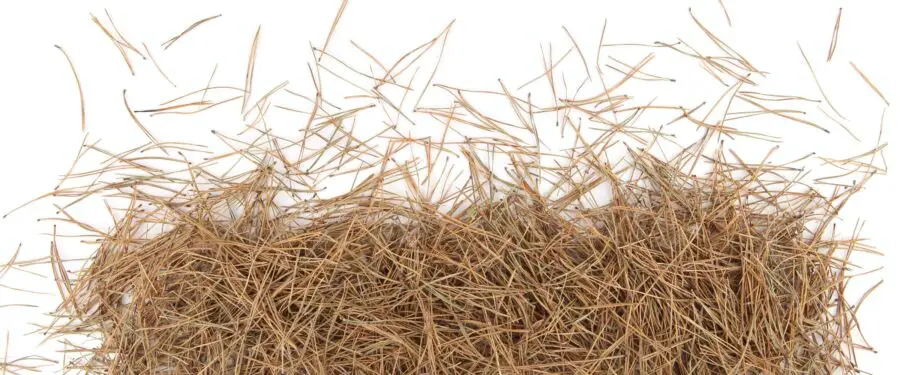
Pine straw mulch, comprised of fallen pine needles or pine straw, is an excellent organic option for insulating and protecting the delicate root systems of hostas. This mulch type not only offers aesthetic appeal but also provides numerous benefits for your flower beds.
When selecting and using pine straw mulch for your hostas, consider the following tips to ensure optimal growth and health for your plants.
Selection
When selecting pine needles for mulching, look for long, dry needles that are free from mold, mildew, or other signs of decay. These needles should ideally come from an area with minimal exposure to pollutants, chemicals, or pests.
High-quality pine straw can often be found in areas beneath mature pine trees or purchased from local garden centers or landscape supply companies.
Application
When adding pine straw to your flower beds, create a layer approximately 2-3 inches thick, being careful not to bury the base of the hosta plants, as this could lead to stem rot. Pine straw should be replenished annually or as needed to maintain the desired thickness.
Pest Control
Pine straw mulch is also known for its natural pest deterrent properties. The slightly acidic nature of pine needles can help keep slugs and snails at bay, common pests known to damage hosta leaves.
Additionally, the mulch’s structure makes it difficult for crawling pests to navigate, providing an added layer of protection for your plants.
In conclusion, pine straw mulch is a natural and sustainable choice for nurturing your hostas. By selecting high-quality needles and applying them properly, you can create an environment in which your hostas will thrive and flourish.
She bought seeds and raided nurseries and mulched and composted and spent full days with her hands full of earth, coaxing life out of the dry, dull grass my father had spent years pushing a mower over.
— Sarah Dessen
Bark Mulch in Flower Beds – Choosing and Utilizing the Right Mulch for Hostas
Bark mulch can be a valuable addition to your hosta garden, providing numerous benefits for your plants’ health and vitality.
With two common types available—nuggets and shredded bark mulch—selecting the right one for your flower beds can make a significant difference in the well-being of your hostas.
Let’s delve into the features of each type, how to use them effectively, and why they are an excellent choice for your hosta flower beds.
Nugget Bark Mulch
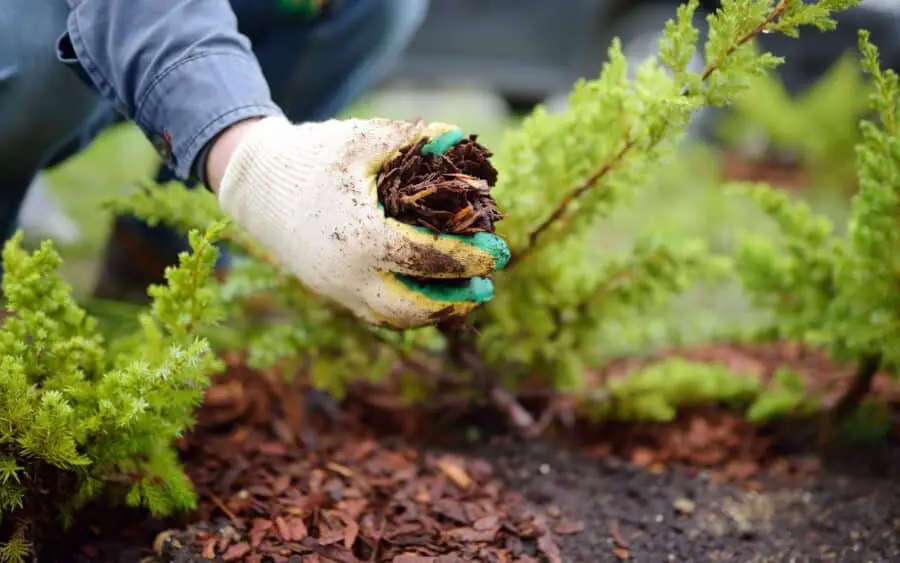
Nugget bark mulch, as the name suggests, consists of large, irregularly shaped chunks of tree bark. This type of mulch is known for its long-lasting nature and ability to maintain its appearance over time.
Nugget bark mulch offers excellent insulation for plant roots and helps to retain soil moisture, a crucial factor for hostas.
Additionally, nugget bark mulch can discourage the growth of weeds and prevent soil erosion. However, due to its chunky nature, it may not be the best option for slopes or areas prone to runoff.
Shredded Bark Mulch
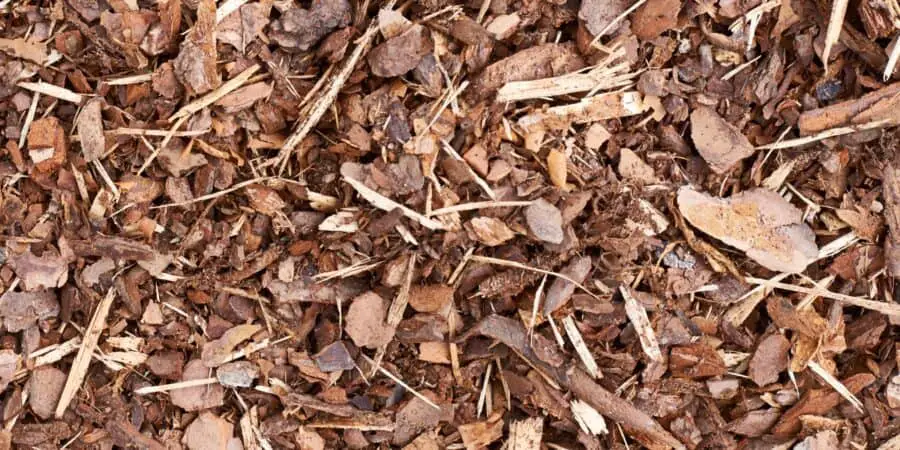
Shredded bark mulch is composed of finely ground bark, creating a more compact and tightly knit layer when applied.
This type of mulch is excellent for hostas, as it breaks down more quickly than nugget bark mulch, enriching the soil with essential nutrients.
Shredded bark mulch also offers excellent moisture retention and weed suppression. Due to its finer texture, it is better suited for slopes or areas where water runoff is a concern.
Application Tips
Apply a 2-4 inch layer of mulch around the plants, taking care to avoid direct contact with the hosta’s stems and leaves. This will prevent potential stem rot and other diseases caused by excessive moisture.
Replenish the mulch as needed, particularly with shredded bark mulch, which decomposes more rapidly.
In conclusion, both nugget and shredded bark mulch can offer immense benefits to your hosta flower beds.
By selecting the appropriate type based on your garden’s specific needs and applying it correctly, you can promote healthy, thriving hosta plants that will bring beauty and enjoyment to your garden for years to come.
Mulch for hostas is an essential gardening practice that helps retain soil moisture, regulates temperature, and suppresses weed growth.
— Rain Tree Gardens
Mulching Techniques for Hostas
Application Thickness
Aim for a 2-3 inch layer of organic mulch around the plants when mulching your hostas. This thickness effectively helps retain moisture and provides essential nutrients for healthy growth.
Crown Protection
While applying mulch, be sure not to put mulch directly on the stems (crown) of your hostas. Doing so may cause stem rot. Maintain a safe distance from the plant crown while ensuring the root zone is well-covered.
Alternative Mulches for Hostas
Compost as Mulch: A Sustainable Solution for Your Garden
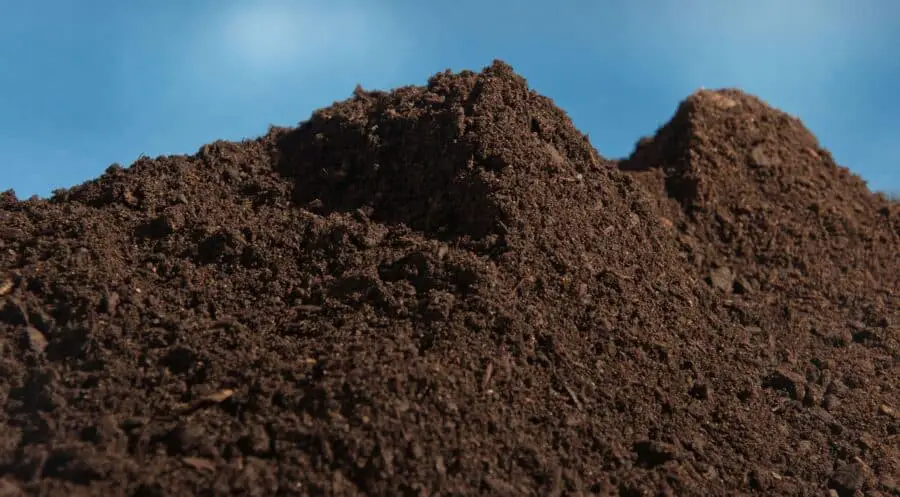
Regarding gardening, mulch is key in maintaining soil health and promoting plant growth. Traditionally, materials like wood chips, straw, or even pebbles have been used for this purpose.
However, compost is emerging as an efficient and eco-friendly alternative for mulch.
Compost, a nutrient-rich mixture of decomposed organic matter, can be an effective mulch when applied to the soil’s surface.
Not only does it help retain moisture and regulate temperature, but it also provides essential nutrients for plant growth.
Unlike other mulches, compost continuously breaks down and integrates into the soil, improving its structure and fertility over time.
Gardeners can reduce their reliance on synthetic fertilizers and other chemical additives by using compost as mulch.
This sustainable practice contributes to a healthier ecosystem, reducing the potential for nutrient runoff and groundwater contamination.
Moreover, compost as mulch can help suppress weeds, lessening the need for harmful herbicides.
The main disadvantage when using compost is it is not very effective at controlling weeds. Semi-annual applications can help.
Wood Chip Mulch for Flower Beds: Choosing and Using the Right Chips for Lush Hostas
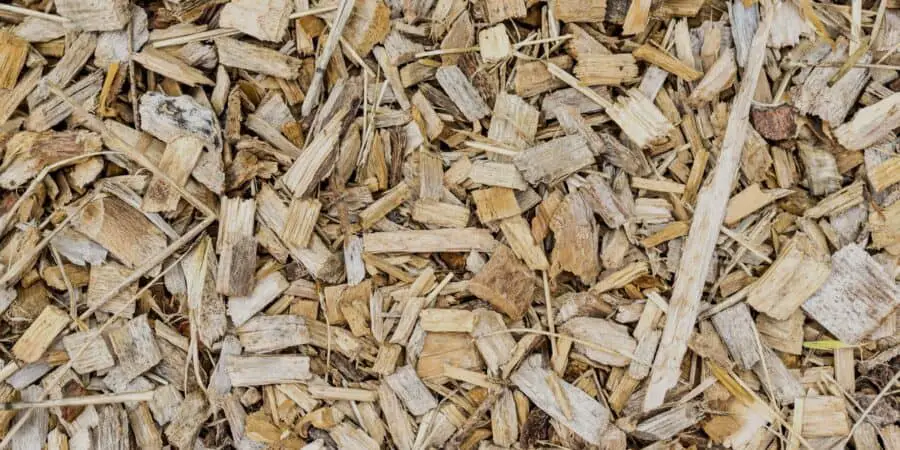
Wood chip mulch is a popular choice for gardeners when it comes to keeping their hosta plants healthy and thriving.
This organic material not only suppresses weeds and helps retain soil moisture, but it also adds a natural aesthetic to the garden.
In this section, we will explore the factors to consider when selecting and using wood chips in your hosta flower beds, as well as their impact on nitrogen availability.
Selection
To begin, it’s essential to choose the right type of wood chips for your hosta flower beds. Look for chips sourced from hardwood trees, such as oak, maple, or hickory, which decompose more slowly and provide longer-lasting benefits compared to softwood chips.
Avoid using chips from black walnut trees or other allelopathic species, as they release chemicals that can be harmful to hostas and other plants.
Application Tips
When it comes to applying wood chips, a layer of 2-3 inches is ideal. This thickness will adequately suppress weeds and help regulate soil temperature without suffocating the hosta’s roots.
If you’re starting with a new flower bed, spread the chips evenly over the soil after planting your hostas, making sure to leave a few inches of space around the base of each plant. This will help prevent rot and discourage pests from making a home near the hostas.
Nitrogen Depletion
A common concern with using wood chip mulch is its potential to deplete nitrogen in the soil as it decomposes. However, this is generally not an issue when the chips are used as a surface mulch, as they will capture very little nitrogen from the soil.
The further the chips are embedded into the earth, the more nitrogen they absorb as they decay. In fact, the slow decomposition of hardwood chips can release nutrients back into the soil, benefiting your hostas over time.
To ensure your hostas have access to sufficient nitrogen, consider incorporating a nitrogen-rich organic matter such as compost or well-rotted manure into the soil before mulching.
This will provide the plants with the nutrients they need for robust growth and maintain the overall health of your flower beds.
By selecting the right wood chips and using them effectively, you can create an optimal environment for your hostas to flourish.

How to Mulch Hostas in Containers
Hostas are a popular choice for container gardens, both indoors and outdoors, due to their low-maintenance nature and lush, attractive foliage.
Adding a layer of mulch to the top of the potting mix can enhance the appearance of your hostas and provide some practical benefits.
Although the primary function of mulch in container gardens is decorative, it can also help retain moisture and suppress weeds.
When choosing mulch for your container hostas, aesthetics play a significant role.
Many gardeners opt for natural materials like shredded bark, cocoa bean hulls, or decorative moss. However, it must be noted that cocoa bean shells can be toxic to pets if ingested.
On the other hand, gravel is a more permanent and low-maintenance option that can add a modern and polished look to your container garden.
Available in various colors, shapes, and sizes, gravel can be easily customized to complement your hostas and the overall design of your space.
Decorative pebbles or rocks can serve as mulch. These can range in size and color and do not decompose, making them a low-maintenance option.
While rocks and gravel may not provide the same soil-enhancing benefits as organic mulches, it prevents soil erosion and reduces evaporation.
Ultimately, the choice of mulch for your hostas in containers will depend on your personal style, maintenance preferences, and the specific needs of your plants.
Experimenting with different mulching materials will allow you to find the perfect blend of functionality and visual appeal.